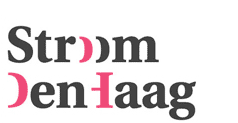Speak, Memory: Leontine Lieffering
12 December 2010 thru 20 February 2011Location: Hogewal 1-9, The Hague
Back to overview page Speak, Memory: click here
Personal stories, distorted memories, lost moments and old traditions, traces of buildings: these are the elements that connect the diverse works in this exhibition. Below we focus on the work of Leontine Lieffering.
The work of Leontine Lieffering (1963, lives and works in The Hague) is characterized by a fascination with architectural spaces and structures. She always works in situ and creates work for a specific location. The work reflects on its location by, for example, exposing old usages of the building or by (re)visualizing lost architectural structures. An interruption in the pattern of the floor of one of the rooms of the Venice Biennale, for example, inspired the wooden imprints in WETLAND (2008). And for LICHTHAL VOORVERTREK BOVENZAAL (1999), Lieffering placed in the vast vault of the former building of the public archives of The Hague, a synthetic rubber cast of doors long gone, as ephemeral afterimages of passageways that were once present.
For Speak, Memory she realizes an installation, IN ZICHT LEGGEN (2010), that takes the complex structure of the lower level of the Stroom exhibition space as a starting point. Her installation of iron wire tubes repeats the rhythm of the wooden beams in the ceiling and the ways in which these beams are used to hide wiring, tube lights, sound equipment and beamers. The technology that is concealed between the wooden beams is given, in a metaphorical sense, a prominent place by Lieffering. In addition, two photographs of works that only exist as images (because they were realized in situ) are shown: K-708-10 (2002 - 2003) and LOCI E IMAGINES II (1995).
If you visit a place, this place always has an effect on your idea, your notes or the drawings that you make on the spot. Leontine Lieffering pushes this notion to the forefront in her work. The place where she makes her work is manifest in the work itself and the two overlap as much as possible. Before she begins working on her installations, she does research into the building, its functions and if necessary, its history.
[Erik Lindner on the work of Leontine Lieffering. The full text appears in the Premium publication, February 2011].
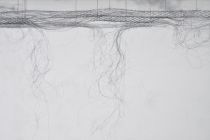
Leontine Lieffering, in zicht leggen, 2010
photo: courtesy of the artist
photo: courtesy of the artist
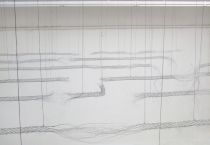
Leontine Lieffering, in zicht leggen, 2010
photo: courtesy of the artist
photo: courtesy of the artist

right: Leontine Lieffering, Loci e imagines II, 1995
photo: Rob Kollaard (Stroom Den Haag)
photo: Rob Kollaard (Stroom Den Haag)
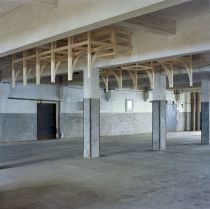
Leontine Lieffering, Loci e imagines II, 1995
photo: Bart Benschop
photo: Bart Benschop
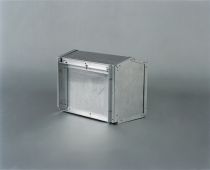
Leontine Lieffering, K-708-10, 2002-2003 (with: Bart Benschop)
photo: Bart Benschop
photo: Bart Benschop

















